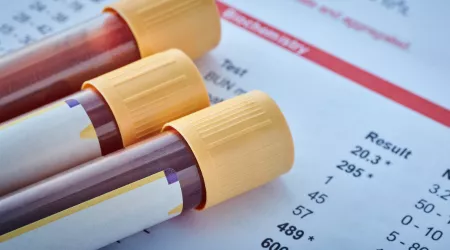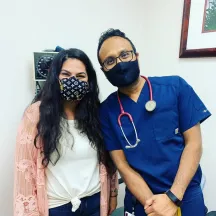PillCam COLON update: Your questions answered
We were thrilled to see all the conversation around the recent announcement about the FDA clearance of Given Imaging’s PillCam COLON as a new colon exam tool. Because we want to be able to address your questions directly, we circled back with Given Imaging to get them answered by the pros. Check out these frequently asked questions and always remember to speak to your doctor about your medical and health-related questions related to your colon exam.
What are the risks associated with PillCam COLON?
PillCam COLON is intended to provide visualization of the colon. It may be used for detection of colon polyps in patients after an incomplete optical colonoscopy with adequate preparation, and when a complete evaluation of the colon was not technically possible. Risks of PillCam capsule endoscopy include capsule retention, aspiration and skin irritation. The risks associated with colon preparation are allergies or other known contraindications to any preparation agents or medications used for the PillCam COLON regimen, according to laxative medication labeling and per physician discretion. Medical, endoscopic or surgical intervention may be necessary to address any of these complications, should they occur. After ingesting the PillCam COLON capsule and until it is excreted, the patient should not be near any source of powerful electromagnetic fields such as one created near an MRI device. A normal or negative capsule endoscopy examination does not exclude the possibility of colon polyps or colon cancer.
Is PillCam COLON meant to replace colonoscopy?
No. PillCam COLON is a safe and accurate way to examine the colon following an incomplete colonoscopy that included adequate bowel preparation and when a complete evaluation of the colon is not technically possible.
What is an incomplete colonoscopy?
An incomplete colonoscopy happens when the colonoscope, the tool that is used during a colonoscopy, is unable to get all the way through the entire colon. If your doctor can’t view the entire colon, small clumps of cells, known as polyps, which form in the lining of the colon and can become cancerous over time, may be missed.
Who is typically at-risk for an incomplete colonoscopy?
An incomplete colonoscopy can happen for a variety of reasons. In patients who have a long (redundant) colon or in patients whose portion of the colon that meets the rectum is narrow, the colonoscope used in traditional colonoscopy may not be able to reach the entire colon to complete the exam. Diverticulitis and insufficient bowel preparation can also be the cause of an incomplete colonoscopy.
Incomplete colonoscopies occur more often in women due to the anatomical differences between men and women. Women experience abdominal surgeries, like hysterectomies or C-sections, which can make completing a colonoscopy difficult.
Each year, about 750,000 Americans experience an incomplete colonoscopy. Because it’s important to fully examine the entire colon for the occurrence of polyps, doctors may recommend alternative colon exams, like PillCam COLON, after an incomplete colonoscopy. Unfortunately today, anywhere from 18-54% of patients who have an incomplete colonoscopy don’t choose to undergo an additional exam to complete their colonic evaluation.
Do I have to be sedated to have PillCam COLON?
No. PillCam COLON is ingested, similar to swallowing a multi-vitamin, at your doctor’s office, so there isn’t a need for sedation.
Is prep required with PillCam COLON?
Yes. Similar to the preparation for colonoscopy, your doctor will advise you on how to prepare for the PillCam COLON exam which will include a clear liquid diet the day before the exam and laxatives the night before and morning of the exam. Additional laxatives are also required during the exam.
How big is PillCam COLON?
PillCam COLON measures 12 mm X 33 mm, roughly the size of a standard multi-vitamin.
Can PillCam COLON take biopsies?
No. PillCam COLON is designed to visualize the colon. PillCam COLON doesn’t have the capability to perform a biopsy. After the PillCam COLON exam, a follow-up exam may be recommended to remove and treat any findings such as polyps.
How does PillCam work?
PillCam COLON uses a miniaturized camera contained in a disposable capsule that naturally passes through the digestive system. PillCam COLON transmits up to 35 frames per second for approximately 10 hours to a recording device worn by the patient. The capsule is passed with a bowel movement and does not need to be retrieved to collect the images from the exam.
Is PillCam COLON currently available in the US?
While cleared by the FDA, PillCam COLON isn’t currently available in the U.S. Given Imaging’s goal is to ensure that physicians are fully trained to use PillCam COLON, so a relatively small number of physicians across the U.S. will be using PillCam COLON in 2014. They expect that more doctors and hospitals will be making PillCam COLON available to their patients over time. As physicians around the U.S. obtain and offer PillCam COLON, Given Imaging will update their Find a Physician feature on their website so patients can find a doctor in their area.
How much does PillCam COLON cost? Is it covered by insurance?
When PillCam COLON becomes available, the cost will vary by location and your type of insurance. As with any medical procedure, please consult with your physician or facility medical staff for more information on these details.
Top resources

Legislation introduced to address young-onset CRC
Explore the urgent need for the Colorectal Cancer Early Detection Act (HR 7714), legislation aimed at combating the rising incidence of colorectal cancer among younger adults through enhanced screening, education, and research.

Dak Prescott joins Alliance to ‘LEAD FROM BEHIND’
Initiative aims to reduce stigma and educate about screening choices, as the Colorectal Cancer Alliance launches a health equity fund to decrease disparities.

Act now to create a coverage pathway for future blood-based detection
On the horizon are blood tests that have shown the ability to detect a variety of cancers including colorectal and rare cancers. Though these tests are still in development and are not yet approved by the FDA, clinical trials have shown impressive results.





